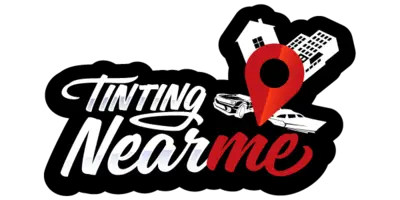2024 South Dakota Legal Tint Laws Explained
You’re likely familiar with the concept of tinted windows on vehicles, but did you know that in South Dakota, there are specific legal tint laws that have been updated for 2024? These laws dictate how dark or reflective your vehicle’s windows can be, and they vary for different kinds of vehicles. It’s not just about style or privacy, as these laws are actually designed to ensure safety on the roads. So, if you’ve been contemplating a new tint job or just want to stay abreast of the current regulations, stick around. We’re about to unpack these intricate rules and their implications for South Dakotan motorists.
The information on myeyerx.net isn’t legal advice; consider it a starting point. Always verify with local and state authorities, as the final decision rests with you. We are not lawyers. For specific legal guidance, we can refer you to legal experts. Remember, knowledge of both state and local laws is essential, and even law enforcement might not be fully updated. We aim for accuracy but advise double-checking for the latest regulations.
Key Takeaways
Key Takeaways
Key Takeaways
- South Dakota has specific tint darkness requirements for different vehicle types, with sedans requiring front side windows to allow more than 35% of light in and back side and rear windows to let in over 20% light.
- Metallic or mirrored appearance on front and back side windows is prohibited in South Dakota, although window tint can contain metallic elements for reflection as long as it does not give a mirrored effect.
- South Dakota mandates a 78% Visible Light Transmission (VLT) for front side windows and windshields on cars, and reflective tint is allowed as long as it does not exhibit a metallic or mirrored appearance.
- There are no medical exemptions for special car window tint in South Dakota, and all vehicles must adhere to the specified VLT% regardless of medical need.
Need Help Getting a Medical Exemption?
Our Doctors Are Here For You!
MyEyeRx was established with the objective of simplifying the complex landscape of state regulations pertaining to legal tint medical exemptions for window tinting. For individuals seeking to navigate these regulations without resorting to a do-it-yourself approach, we offer a streamlined solution. Our team includes qualified medical professionals who are available to conduct consultations via Zoom. These sessions are designed to assess your eligibility for a medical exemption, ensuring a personalized and efficient process for acquiring the necessary documentation.
South Dakota Tint Darkness Guidelines
In South Dakota, the darkness of your vehicle’s window tint is measured by Visible Light Transmission (VLT) percentage, which indicates the amount of visible light allowed through your car windows. This key aspect of South Dakota tinting is integral to the Dakota window tinting laws. These laws are designed to ensure not only your comfort and privacy but also your safety and that of other road users.
Under South Dakota tint laws, different vehicle types have specific tint darkness requirements. If you drive a sedan, the laws dictate that your front side windows must allow more than 35% of light in. Your back side and rear windows should let in over 20% light. These specifications are identical for SUVs and vans, making it easy for you to remember and abide by the Dakota window tint law.
Reflectivity is another crucial element of South Dakota window tinting. Though window tint can reflect incoming light, the Dakota Window Tint Laws prohibit a metallic or mirrored appearance on the front and back side windows of all vehicles. This restriction is put in place to avoid unnecessary glare that could potentially impair drivers’ vision.
Interestingly, South Dakota window tint laws do not explicitly restrict tint colors and there are no restrictions on side mirrors. Additionally, the law allows a 9% variance in tint darkness.
It’s essential to be aware of these Dakota window tint laws. Whether you’re considering a new tint application or checking the legality of your current tinting, this knowledge can spare you from potential fines and ensure your vehicle’s compliance.
Reflectivity Rules for Tint
You’ll need to pay close attention to the reflectivity of your window tint in South Dakota, as the law regulates this to prevent a metallic or mirrored appearance on your vehicle’s front and back side windows. The regulations in South Dakota allow window tint to contain metallic elements to reflect incoming light, but they must not give a mirrored effect. This is a crucial aspect of the car window tint rules that you must remember.
Tint reflection for SUV and sedans varies, with specific requirements for each to avoid a metallic or mirrored appearance. This distinction is another important part of the tinting rules. Non-reflective tint is allowed on the front side windows to reduce the glare and heat generated by the sun’s rays. The window must allow more than a certain percentage of light in, which differs for sedans and SUVs or vans.
Reflective window tint can help in reducing the glare and heat generated from visible light, making your journey more comfortable. However, it’s important to ensure that your tint meets South Dakota’s regulations.
The Dakota Codified Laws sections provide a detailed guide on these rules, ensuring your car’s tint doesn’t violate the law. It’s always a good practice to check with your local Department of Motor Vehicles (DMV) or law enforcement authorities to ensure that your window tint is compliant.
Understanding and adhering to these tint laws will keep you on the right side of the law while ensuring a comfortable and glare-free drive in South Dakota.
Additional Tint Regulations
South Dakota’s additional tint regulations encompass specific Visible Light Transmission (VLT) percentages for different vehicle types, stringent rules on reflective tint appearance, and certification requirements for film manufacturers, among others. In Dakota, the law mandates a 78% VLT for front side windows and windshield on cars, ensuring that a substantial amount of visible light can penetrate the window for safe driving.
Reflective tint is allowed in South Dakota; however, it must not exhibit a metallic or mirrored appearance. This law is enforced to prevent potential distractions for other motorists and to maintain the aesthetic integrity of the vehicle.
Another critical aspect of South Dakota’s tint law is the certification requirement for film manufacturers. If you’re considering window tinting, it’s crucial to ensure that your chosen product is certified. This requirement guarantees that the tinting film meets specific standards of quality and safety.
In South Dakota, there are no restrictions on tint colors, but the law stipulates that stickers are required to identify legal tinting. The sticker is placed between the film and glass on the driver’s side window to certify that the tint meets legal requirements. Additionally, a 9% variance in VLT percentages is allowed, providing a bit of flexibility.
Lastly, it’s advised to verify the local interpretation of tinting laws with authorities. This is because while the state sets the overall guidelines, the enforcement and interpretation may vary across different counties. Understanding these additional tint regulations in South Dakota will ensure you stay compliant while enjoying the benefits of window tinting.
Understanding Tint Medical Exemptions
Navigating the ins and outs of tint medical exemptions in South Dakota can seem complex, but it’s essential to note that the state doesn’t grant any such exemptions for special car window tint. In other words, there aren’t medical exemptions that would allow using special car window tints that deviate from the standard Visible Light Transmission percentage or VLT%. Unlike some states, South Dakota’s regulations hold firm, requiring all vehicles to adhere to the specified VLT% irrespective of any medical need. This percentage refers to the amount of visible light allowed to pass through both the film and glass of your car windows.
It’s crucial to remain updated with these rules and regulations, especially if you’re considering tinting your side mirrors in South Dakota. Always verify information with your local DMV or law enforcement authorities to ensure your understanding is up-to-date. Remember, interpretation of these tinting laws can vary across different counties within the state.
Now, when it comes to identifying legal tinting, manufacturers need to certify the film sold in South Dakota. A sticker that certifies the film is required between the film and glass on each tinted window. This certification is a crucial aspect to consider when purchasing and applying any window tint.
Cost of Legal Window Tinting
Having understood the regulations and requirements for window tinting in South Dakota, it’s crucial to also consider the potential expenditure involved in legal window tinting. The cost can vary significantly depending on factors such as the type of tint, the number of car windows you want to tint, and whether a warranty is included.
For a basic tint using classic film, the cost for a sedan can be less than $150. However, if you opt for a high-quality film, such as ceramic, the cost of legal window tinting can go up to $400 per vehicle. Side windows must allow a certain amount of light to penetrate; remember that no metallic films are allowed on these windows in South Dakota.
An alternative option to consider is a DIY tint kit. Often costing less than $100, they present a more affordable option. However, be careful to make sure the film they sell in South Dakota adheres to the state’s tint laws. A sticker to identify legal tinting is required, so check with your dealer to ensure it is provided.
The regulations in South Dakota may differ from those in other states, so it’s essential to be well-informed before deciding. The key is to balance your preferences, budget, and the state’s requirements to make the best decision. The cost of legal window tinting is just one part of the equation. Your dealer can provide detailed information and help guide your decision to ensure you meet South Dakota’s legal tinting requirements.

Don't want the hassle? Let us take care of your exemption for you!
MyEyeRx.net is here to help you streamlines the process of obtaining a medical exemption for window tint online. Explore our services to easily transform your window tint from non-compliant to legally approved!
Because of the differences in each of the 50 states, we’ve crafted distinct guides for securing window tint medical exemptions for each of the individual states.

Toriano (Tory) Dewberry
Become one of the many satisfied clients Toriano has assisted in obtaining a medical exemption without stepping out of their homes. Click the button below to begin and discover if you're eligible for a medical exemption.

Toriano (Tory) Dewberry
Become one of the many satisfied clients Toriano has assisted in obtaining a medical exemption without stepping out of their homes. Click the button below to begin and discover if you're eligible for a medical exemption.
Frequently Asked Questions (FAQ'S)
What Is the Darkest Tint Allowed?
In South Dakota, you’re allowed a tint that permits over 35% light in the front side windows. This limit balances tinting benefits like UV protection with safety implications such as visibility. However, professional installation may be costly. If you’re considering DIY tinting, remember tint durability, legality, and style. Understanding the legality avoids potential consequences. Always check with local authorities as interpretations of tint laws may vary.
What Percentage Is Darkest Legal Tint?
In South Dakota, you’re not left in the dark about legal tint percentages. Front side windows shouldn’t block more than 65% of light, while rear windows can block up to 80%. These laws balance visibility issues, especially for night driving, and safety concerns. They also consider UV protection, glare reduction, and privacy benefits. Remember, exceeding tint durability can have legal implications. So, when going through the installation process, ensure your tint meets these guidelines.
Is It Illegal to Have a Cracked Windshield in South Dakota?
Yes, it’s illegal to have a cracked windshield in South Dakota. State regulations mandate windshields to be clear of damage impairing visibility. This law is due to safety risks and impact on driving. Crack consequences might include traffic violations, legal penalties, and insurance implications. Vehicle inspections would flag this issue. Your repair options are to either fix the crack or replace the windshield entirely. So, don’t ignore a cracked windshield, get it fixed.
Can You Get Pulled Over for Tint in South Dakota?
Yes, you can be pulled over for tint in South Dakota. Tint regulations are enforced by law enforcement during routine traffic stops. Vehicle customization, like window film, can lead to visibility concerns and legal implications. While you may value the privacy aspects, you must also consider road safety. If your tint is too dark, you can face tint penalties. So be aware of the rules to avoid a run-in with the law.

MyeyeRx.net
Ensuring your tint is not just about style, but legality and safety.
Let us guide you through the maze of state regulations to legal clarity.

Conclusion
Navigating South Dakota’s 2024 Legal Tint Laws can feel like navigating a maze at night. But fear not, you’re now armed with the knowledge of tint darkness rules, reflectivity requirements, additional regulations, and medical exemptions. Remember, your car’s tint is not just about style, it’s a shield that guards your privacy and protects you from harmful UV rays. Stay informed, stay legal, and let your journey through the tint maze be a breeze.
Looking to find a Reputable Window Tint Company In South Dakota?
Checkout Tintingnearme.com to Find A Local Tint Shop
After learning about window tint laws, the next step is to find a trusted local window tinting shop. Tinting Near Me offers a selection of reputable shops knowledgeable in both quality tinting and legal standards, including medical exemptions.
Choose a shop from their list for expert service that meets legal requirements and enhances your vehicle’s compliance and protection.


